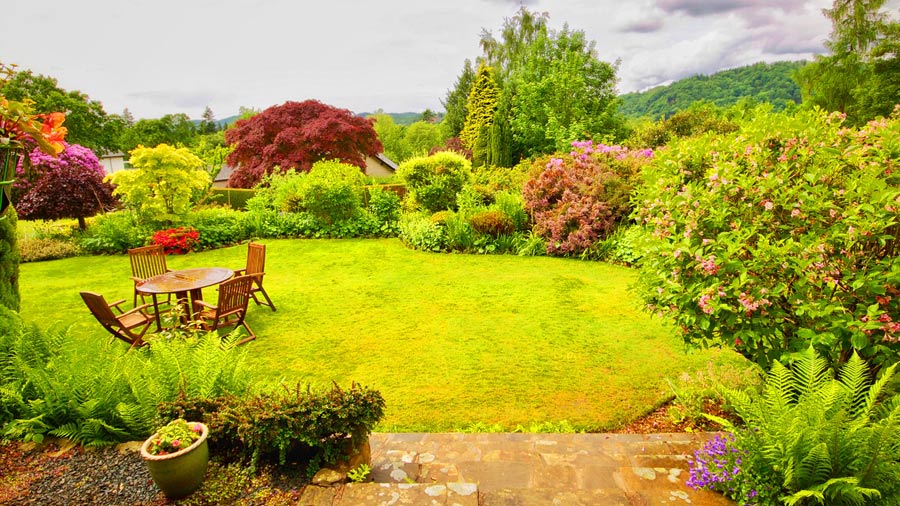As the sun climbs higher and the days stretch out, gardeners face the annual challenge of keeping their gardens lush and vibrant despite the sweltering heat. Summer doesn’t have to spell disaster for your green oasis if you follow some key landscaping tips designed to combat the heat and keep your garden flourishing.
Watering Strategies
Watering your garden effectively is more of an art form in the heat of summer. To prevent water loss through evaporation, water your plants early in the morning or late in the evening when temperatures are cooler. This timing ensures that the water reaches the roots and helps plants stay hydrated throughout the day.
Deep watering is crucial during hot weather. Instead of a quick surface sprinkle, water deeply and infrequently to encourage roots to grow deeper into the soil, where they can access moisture even as the surface dries out. Adjust your watering schedule based on the weather conditions; more isn’t always better, especially if you’ve had recent rain.
Different plants have different hydration needs. Annuals and perennials might require more frequent watering, while established trees and shrubs can usually tap into deeper moisture reserves in the soil.
Mulching Techniques
Mulching is a summer garden’s best friend. A good mulch layer helps retain soil moisture, suppress weeds, and regulate soil temperature. Organic mulches like bark chips or straw not only perform these vital functions but also gradually break down and enrich the soil.
Apply mulch to a depth of about 2-3 inches, but be careful not to smother your plants. Keep mulch a few inches away from plant stems to prevent rot and pest infestation.
Shade Management
Protecting plants from the midday sun is crucial to prevent scorch and heat stress. Employ temporary shade structures or use shade cloths over the most vulnerable plants during the hottest part of the day. For a more natural approach, strategically plant taller plants or trees to provide natural shade to smaller, more sensitive vegetation below.
When planning your garden, consider incorporating heat-tolerant plants in areas that receive full sun. These plants are often native to arid environments and are better adapted to survive and thrive under intense heat.
Pruning and Deadheading
Summer pruning and deadheading are not just about maintaining appearances. Removing spent blooms and dead branches can encourage plants to produce new growth and more flowers. It also helps prevent diseases and pests from taking hold. Each plant type has its own pruning needs, so tailor your technique to encourage healthy growth without over-stressing the plants.
Pest and Disease Management
Hot weather can bring out a host of pests and diseases. Keep an eye out for signs of infestation or illness, such as discolored leaves, stunted growth, or sudden wilting. Use organic and eco-friendly solutions whenever possible, as these are better for your garden’s overall health and the environment. Regular inspections and clean gardening practices are essential preventive measures.
Fertilization and Soil Care
Soil health is foundational to a thriving summer garden. Avoid heavy fertilization during peak heat, as this can burn plants and lead to rapid but weak growth that pests and diseases love. Opt for slow-release or organic fertilizers that feed plants gently over time.
Enhancing soil structure and drainage can also help plants cope with heat. Incorporate organic matter like compost into your soil to improve its texture, nutrient content, and moisture-holding capacity.
Conclusion
Keeping your garden vibrant through the summer is a rewarding challenge that pays off in lush foliage, bright blooms, and a thriving landscape. By implementing thoughtful watering practices, effective mulching, strategic shade management, and diligent care routines, you can ensure your garden not only survives but thrives during the hot months. Share your success stories and summer gardening tips, and let’s continue to grow our gardening community together!



